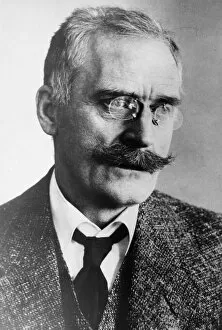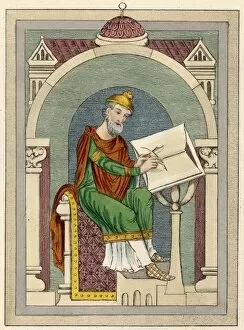Canute Collection (#3)
"Canute: The Great King of Old England and the Legends Surrounding Him" King Canute (Cnut), a prominent figure in English history, ruled during the early 11th century
For sale as Licensed Images
Choose your image, Select your licence and Download the media
"Canute: The Great King of Old England and the Legends Surrounding Him" King Canute (Cnut), a prominent figure in English history, ruled during the early 11th century. Known for his wisdom and military prowess, he left an indelible mark on the country's heritage. In this captivating collection of images, we delve into various aspects of Canute's life and legacy. The first lithograph depicts "Standards of Old England, " showcasing the vibrant colors that symbolized his reign, and is a testament to his power and authority over the land. Another image portrays the somber scene of Siward, Earl of Northumberland's death. This event marked a turning point in Canute's rule as he solidified his control over northern territories. Moving forward, we glimpse at different representations of King Cnut himself - from regal portraits to depictions highlighting significant moments in his life. One such moment captures him standing tall amidst Shaftesbury in England, exuding strength and determination. Intriguingly, there is also an image featuring the coffin of one of Canute's daughters at Bosham Church. It serves as a poignant reminder that even great kings face personal tragedies. George Vertue's artwork presents us with "King Canute the Dane" from 1732 - an exquisite portrayal that showcases both artistic skill and historical significance. We are then transported to witness a meeting between Edmund Ironside and Canute on Alney Island in Severn. This encounter speaks volumes about their rivalry but also highlights their willingness to find common ground when faced with adversity. One cannot discuss King Cnut without mentioning his famous attempt to halt the incoming tide - reminding us that even powerful rulers have limits they must acknowledge. Lastly, we encounter Margaret of Denmark alongside St. Canute; her banner proudly displaying the crusader cross signifies her connection to both faith and royalty while paying homage to Denmark’s patron saint.















